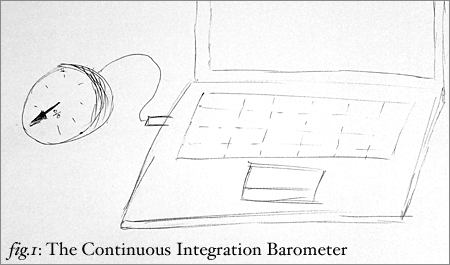d.Construct 2006 was well over a month ago, now, but I’ve simply been so busy since then that I just haven’t had a moment to write up my experiences.
d.construct is a “grass-roots” web conference in Brighton, run by the nice chaps from Clearleft. It only lasts a day, and, at £75+VAT, it’s insanely good value. I don’t want that last fact to go unnoticed. It was also a great lineup of speakers, including Thomas Vanderwal, Jeremy Keith, Simon Willison, Paul Hammond, Jeff Barr, and Jeff Veen. £88 just to hear all of them speak is, any way you look at it, a very good deal. And then, of course, there’s the all the networking and the chat and the the pub, with four-hundred web-types who descended on Brighton, which is often the highlight of any conference.
When I filled in my feedback form, I realised I didn’t have time to write what I really wanted to say. So I put down the improvements that were the easiest to fix (and, it seems, the most universally agreed upon): more legroom, more power sockets.
Beyond that, what I had to say wasn’t so appropriate for a feedback form, as I’m not quite show how to improve upon my criticisms. But I still think it’s worth putting them down in writing.
At the heart of d.construct is a very good event. I enjoyed this year’s event a lot. But I think there are some areas that could perhaps be improved – or at least addressed – in future years.
First of all, the format. d.construct is much like the Carson Systems’ Future of Web Apps events – it’s a series of speakers talking, one at a time, one after another, in a big auditorium. It’s not stranded or streamed. At the same time… it’s a bit intimidating in that people tend not to want to break out of it. The moment you introduce two or more strands, attendees begin to realise that perhaps they don’t want to go to either talk, and so they decamp to the back room to mingle and chat. And d.construct had a great “back room”, with power, refreshments, and tons of space. As it was… everyone piled into the hall for every session, regardless of whether or not it interested them. Quite often, I saw a number of people ignoring the talk to concentrate on their iPhoto session, and then dumping their latest pictures onto Flickr. I’m sure they could have done that “out back”, or, more likely, found people to talk about things they were interested in. I cut Aral Balkan’s Flash talk – because, whilst I’m a client-side developer, I have zero interest in Flash – and was disappointed to only find about six people hanging around out back, and one or two in the pub around the corner. The chat I had during the session I skipped was great.
I also found the angle a little curious. d.construct, whilst pitching itself as a “web application and Web 2.0 conference”, is very much a web conference coming from the front end. I was disappointed when Jeremy came over very apologetic that he was even showing code at all during his presentation – and it wasn’t really very complex at all. In the end, no matter how many wireframes and PSDs are drawn, websites only exist in code, and I get frustrated when people have to shy away from that kind of expression.
Similarly, I was a bit frustrated that he managed to talk about REST without mentioning HTTP verbs (GET/POST/PUT/DELETE), as they’re as important to the RESTian concept as the URL structure. But I can understand – given what appeared to be the conference’s target audience – why this was the case. It also meant that Jeff Barr got a slightly raw deal – he was going first, and he was easily the most “corporate” of the speakers, but I thought his talk was a great balance of explaining some of the awesome work Amazon are currently doing, and demonstrating how real users have made use of it. But, if you don’t get the importance of S3 or especially EC2 (which is, in some ways, revolutionary), it just sounds like corporate buzzwordiness.
And I was also frustrated by this because the more general-purpose or front-end talks – Thomas Vanderwal’s IA session on tagging (a pretty complete history and explanation of tagging) and Jeff Veen’s phenomenal closing session – were both reasonably high-level (in terms of what they’re discussing) and well received. And for good reason – Veen was absolute dynamite.
Maybe it’s because Clearleft themselves are, primarily, a front-end consultancy, but I don’t want to trivialise things that far or make such bold assumptions. It might just be that it’s the best common ground over which to bring people in the UK together. But I think there’s interesting things about development to be expressed to general audiences, especially given that buzzword-of-the-moment AJAX is all about the point where the front- and back-ends join. And I’m concerned that whilst Web 2.0 (however you understand that phrase) advocates a more holistic, interconnected web, the design and build process is becoming ever-less holistic.
But I don’t want to be a complete downer. Like I said, it was a great-value conference, at which I met many interesting people, and the speakers were all excellent. Maybe next year it will move to multiple tracks; maybe it’ll broaden its scope. Either way, I’m still going to go; it’s a great mixer of an event, and it’s nice to go to something that’s not in London for once. My congratulations to Richard, Andy, and Jeremy on its success; I hope my comments aren’t taken too hard nor too negatively. And I hope you can see why I didn’t quite have time or space to condense them on the feedback form.
Update: One thing I forgot to mention, that’s surely worth a big plus point, is that the “female quota” at this conference was very high. I’m sure that sounds awfully patronising, but given the amount of coverage of “why women won’t go to conferences” (see Mike Kuniavsky on this), it was interesting to note a percentage well into the double figures – I’d say about 20%+, at least. Whether this is because of the front-end focus – or, rather, the less-threatening, less-technical focus – I don’t know, and again, don’t want to trivialise. But bonus marks for this, for sure.)

 So imagine my surprise when, on the train home this morning, I found that the First Great Western toilets have been substantially modified (see left). At the top, open and close – and then a flick left/right switch for locking, with a red light for ‘lock’ and green for ‘unlocked’.
So imagine my surprise when, on the train home this morning, I found that the First Great Western toilets have been substantially modified (see left). At the top, open and close – and then a flick left/right switch for locking, with a red light for ‘lock’ and green for ‘unlocked’.